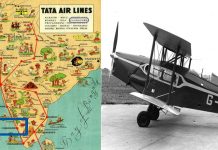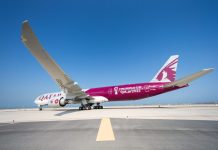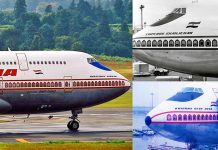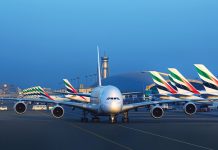What Jets, Airlines Are on the World’s Safest Lists?
Any time travelers board a flight on a major carrier in the United States, their chance of being in a fatal accident is one in seven million, according to a study done by the Massachusetts Institute of Technology. It a traveler flew every day of their life, statistics find it would take 19,000 years succumbing to a fatal accident.
How Safe Is Air Travel?
Given the expected worldwide air traffic of 36.8 million flights, the accident rate is one fatal passenger flight accident per 7,360,000 flights in 2017, according to the Aviation Safety Network (ASN).
In 2017, ASN recorded a total of 10 fatal airliner accidents, resulting in 44 occupant fatalities and 35 persons on the ground. This makes 2017 the safest year ever, both by the number of fatal accidents as well as in terms of fatalities. In 2016 ASN recorded 16 accidents and 303 lives lost.
 On December 31, 2017, aviation had a record period of 398 days with no passenger jet airliner accidents. The last fatal passenger jet airliner accident was on Nov. 28, 2016, when an Avro RJ85 crashed near Medellin, Colombia. It’s been a record 792 days since a civil aircraft accident claimed more than 100 lives, a MetroJet Airbus A321 that crashed in North Sinai, Egypt.
On December 31, 2017, aviation had a record period of 398 days with no passenger jet airliner accidents. The last fatal passenger jet airliner accident was on Nov. 28, 2016, when an Avro RJ85 crashed near Medellin, Colombia. It’s been a record 792 days since a civil aircraft accident claimed more than 100 lives, a MetroJet Airbus A321 that crashed in North Sinai, Egypt.
Statistics compiled by the International Air Transport Association (IATA) found that the 2016 global jet accident rate (measured in hull losses per one million flights) was 1.61, an improvement from 1.79 in 2015.
The Safest Aircraft in the World
There are 10 major commercial jet aircraft that can claim to be the world’s safest after never recording a passenger fatality, according to Boeing.
The annual Boeing Statistical Summary of Commercial Jet Airplane Accidents Worldwide Operations 1959 – 2016 lists the following aircraft as having a fatality free record:

Boeing 717 (formerly the MD95)
Bombardier CRJ700/900/1000 regional jet family
Airbus A380
Boeing 787
Boeing 747-8
Airbus A350
Airbus A340
Bombardier’s CSeries, the Airbus A320NEO and the Boeing 737MAX have only recently started to be delivered, so the in-service numbers are small. The Boeing report does not include jets built in Russia or former Soviet bloc countries nor turboprop or piston-powered aircraft. In 2016, Boeing noted there were 64.4 million flight hours and 29 million departures flown by Western-made jets.
The Safest Airlines in the World
AirlineRatings.com has released the top 20 safest airlines for 2018. They are: Air New Zealand, Alaska Airlines, All Nippon Airways, British Airways, Cathay Pacific Airways, Emirates, Etihad Airways, EVA Air, Finnair, Hawaiian Airlines, Japan Airlines, KLM, Lufthansa, Qantas, Royal Jordanian Airlines, Scandinavian Airline System, Singapore Airlines, Swiss, Virgin Atlantic and, Virgin Australia.

AirlineRatings.com Editor-in-Chief Geoffrey Thomas called the top 20 standouts in the industry” at the forefront of safety, innovation and launching of new aircraft.
“For instance, Australia’s Qantas has been recognized by the British Advertising Standards Association in a test case as the world’s most experienced airline. Qantas has been the lead airline in virtually every major operational safety advancement over the past 60 years and has not had a fatality in the jet era,” said Thomas.
“But Qantas is not alone. Long-established airlines such as Hawaiian and Finnair have perfect records in the jet era.”
AirlineRatings.com editors lauded the top 10 safest low-cost airlines: Aer Lingus, Flybe, Frontier, HK Express, Jetblue, Jetstar Australia, Thomas Cook, Virgin America, Vueling, and Westjet. “Unlike a number of low-cost carriers, these airlines have all passed the stringent International Air Transport Association Operational Safety Audit (IOSA) and have excellent safety records,” according to the site. The editors looked at safety factors including audits from aviation’s governing bodies and lead associations; government audits; airline’s crash and serious incident record; and the fleet age.
And it also announced its lowest ranked (one star) airlines:; Air Koryo, Bluewing Airlines, Buddha Air, Nepal Airlines, Tara Air, Trigana Air Service and Yeti Airlines.

For the major airlines, AirlineRatings.com uses a number of factors related to audits from aviation’s governing bodies and lead associations, as well as government audits and the airline’s fatality record. The site’s editorial team also examined each airline’s operational history, incident records and operational excellence to determine its list. Questions asked include:
Is the airline IOSA (IATA Operational Safety Audit) certified?
Is the airline on the European Union (EU) Blacklist?
Has the airline maintained a fatality free record for the past 10 years?
Is the airline FAA (America’s Federal Aviation Administration) endorsed?
Does the country of airline origin meet all 8 ICAO safety parameters?
Has the airline’s fleet been grounded by the country’s governing aviation safety authority due to safety concerns?
Does the airline operate only Russian built aircraft?
The site only looks at serious incidents in making its determinations.



















